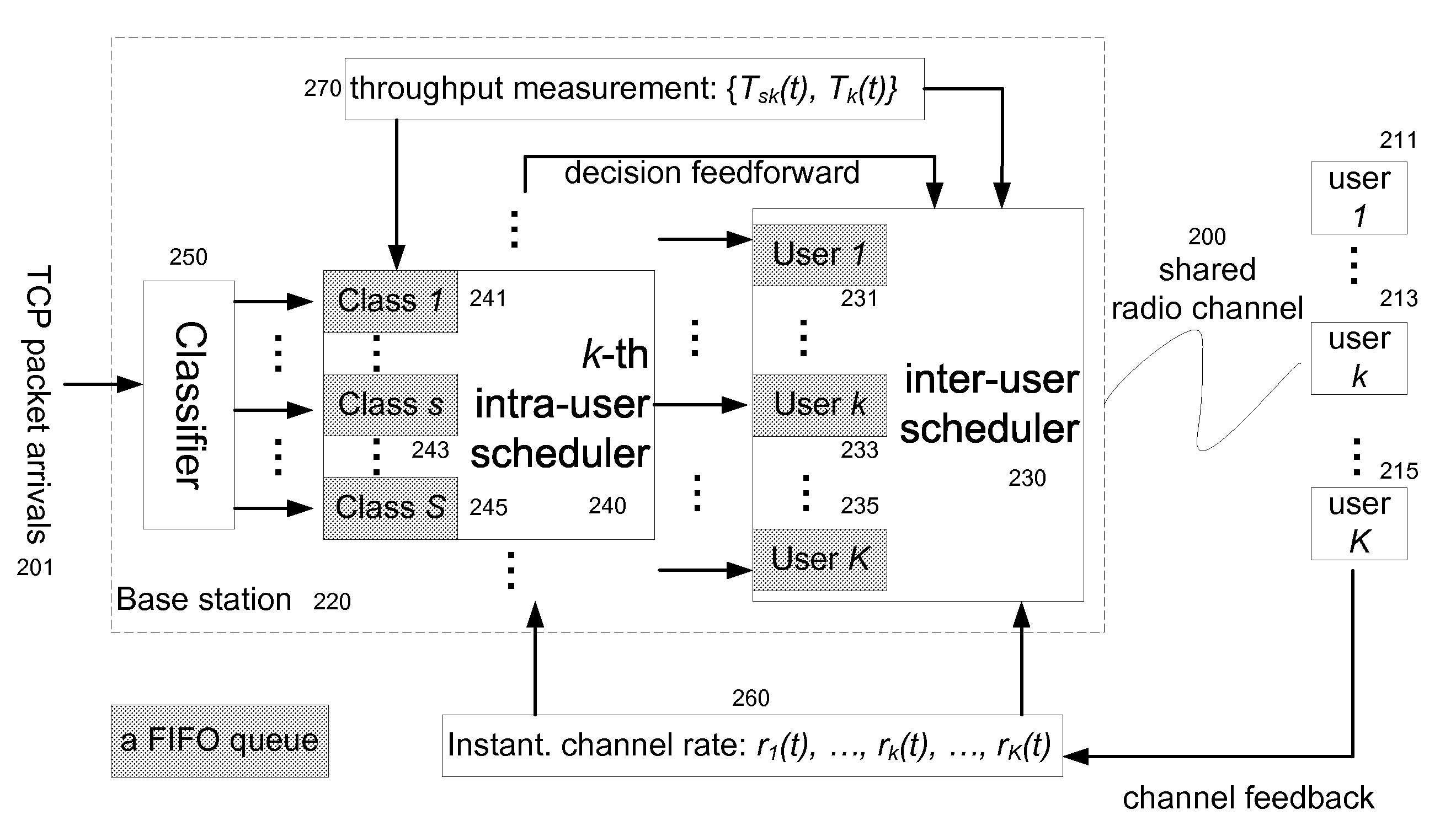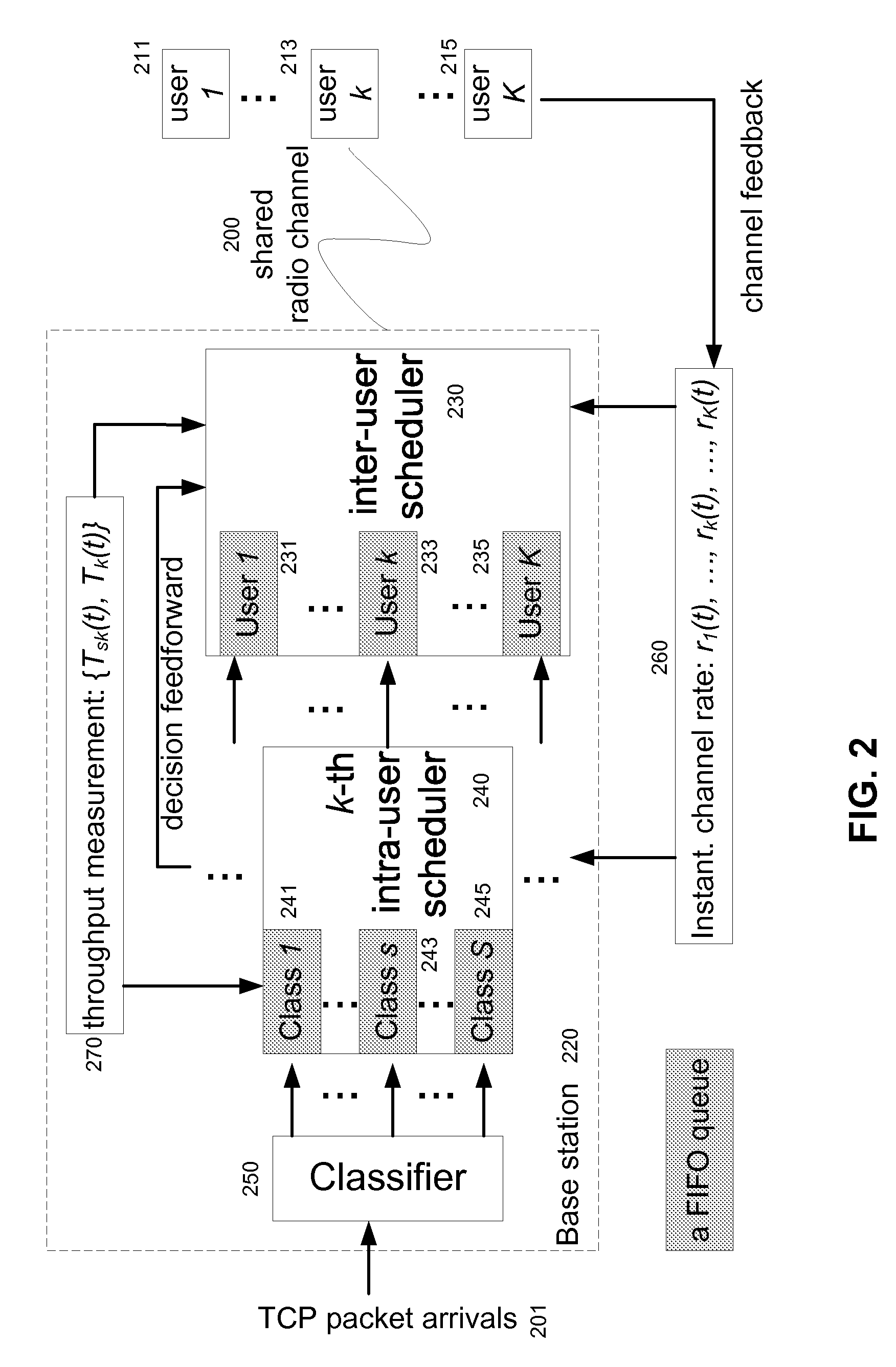Service Differentiated Downlink Scheduling in Wireless Packet Data Systems
a packet data and service technology, applied in the field of wireless communication networks, can solve the problems of opportunistic schedulers assuming an infinite backlog, affecting the service quality of packet data services, so as to avoid starvation of certain service categories or users, maintain resource fairness, and improve user experience of network performan
- Summary
- Abstract
- Description
- Claims
- Application Information
AI Technical Summary
Benefits of technology
Problems solved by technology
Method used
Image
Examples
Embodiment Construction
[0010]FIG. 2 shows a new base station design, in accordance with an embodiment of an aspect of the invention.
[0011] The base station 220 provides packet data services to packet data users 211, . . . , 213, . . . , 215 across a time-slotted shared wireless communication channel 200. For example, the system framework, illustratively, can be a third-generation (3G) cellular radio access network (RAN) where a time-slotted shared downlink channel supports high-speed packet data access for multiple users, e.g., a WCDMA High-Speed Downlink Packet Access (HSDPA) system (see 3gpp Technical Specification 25,308 version 5.2.0, “High Speed Downlink Packet Access (HSDPA): Overall Description,” (March 2002), which is incorporated by reference herein). For discussion purposes only and without limitation, the description herein focuses on time-division-multiplexing (TDM) based access of the shared channel 200 within a single cell, where multiple end users 211, . . . 215 at different locations wait...
PUM
 Login to View More
Login to View More Abstract
Description
Claims
Application Information
 Login to View More
Login to View More - R&D
- Intellectual Property
- Life Sciences
- Materials
- Tech Scout
- Unparalleled Data Quality
- Higher Quality Content
- 60% Fewer Hallucinations
Browse by: Latest US Patents, China's latest patents, Technical Efficacy Thesaurus, Application Domain, Technology Topic, Popular Technical Reports.
© 2025 PatSnap. All rights reserved.Legal|Privacy policy|Modern Slavery Act Transparency Statement|Sitemap|About US| Contact US: help@patsnap.com



